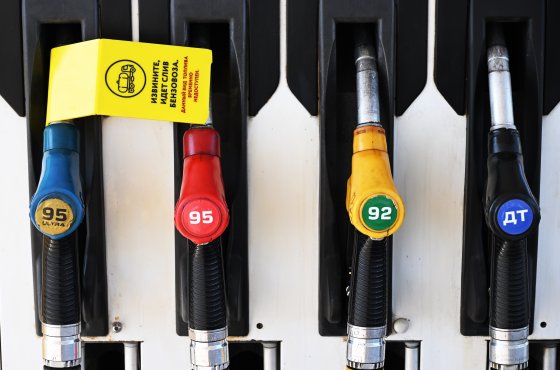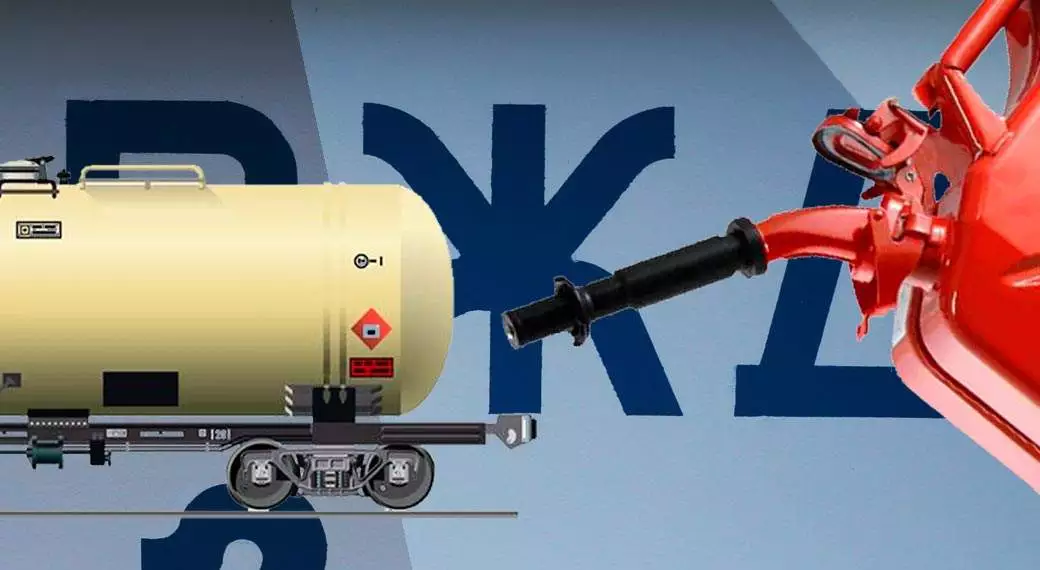In early October, the railway market greeted a so-called sensation with little enthusiasm: Russian Railways (RZD) officially announced the approval of discounts for the transportation of petroleum products. The media seized upon the news without delving into the details. However, as is often the case with sensational claims, the devil turned out to be not just in the details, but in what were, to put it mildly, already outdated protocols.
"What I would like to say regarding the 50% discount for petroleum product transportation is that it actually refers to the extension of individual (station) reducing coefficients... In other words, nothing has changed for shippers: previous conditions were not introduced, but rather extended," commented a source from a major oil and gas company to Vgudok, expressing a lack of enthusiasm for the situation.
To avoid being unfounded, our interlocutor provided the editorial team with a pile of very interesting documents. The essence is as follows: Protocol No. 74 of the RZD Board, dated September 18, 2025, does not introduce any new concessions. It simply moves the expiration date of the individual reducing coefficients (IRC)—the very station discounts that can reach 50% off the base tariff. Previously, these conditions, established by Protocol No. 48 in 2016 and confirmed in 2020 (No. 66), were valid until the end of 2025. They have now been extended until December 31, 2026.
Additionally, an extension of the coefficient of 0.95 (5% discount) for the empty mileage of tankers after transporting petroleum products has been included. At first glance, this indicates stability. Upon closer inspection, it appears to be a postponement of the inevitable.
To understand why shippers are not lining up to celebrate, one need only look at the dynamics of RZD's base tariff. According to analytical data, from December 2016 to June 2025, while overall inflation in the country amounted to approximately 171%, railway tariffs increased by a substantial 208%.
"This is our main pain point. A 50% discount at the stations certainly helps. But when the base price from which this discount is calculated has risen twice as fast as inflation, we are still paying more in absolute terms than we did before the introduction of the IRC in 2016. This is not a gift; it merely slows the decline of our margins," confesses an employee from one of the oil refineries located in the central region of Russia.
In some aspects, this extension appears to be a classic palliative—a slight relief in the face of long-term systemic pressure. The monopoly uses discounts as a tool for controlling and balancing freight flows, rather than as an element of fair competition.
Within the IRC system lies a range of highly specific, almost manual mechanisms that demonstrate how RZD works with significant players.
One of the most well-known examples that appear in the appendices to the protocols is the coefficient of 0.579 for the empty mileage of tankers after transporting gas condensate, particularly on the route from Luzhskaya to Limbi. Essentially, this represents a nearly 42% discount on an empty trip.
However, experts are convinced that such coefficients have nothing to do with market logic. They are the result of individual agreements with the largest shippers. They guarantee volume, and RZD guarantees price. The extension of these conditions until 2026 only confirms that this gentleman's compromise is currently considered more important than a transparent and unified tariff system.
The extension of these "special" conditions provides companies with predictability, which is critically important for planning exports and supplying the domestic market. Without IRCs, analysts estimate that 15-20% of petroleum product volumes could shift to road transport or pipelines, which would be catastrophic for RZD's freight base.
However, this system has a shadow side. First, the market continues to demand a transparent methodology for calculating IRCs. What basis is there for deciding on a 50% discount for a specific route? Is it based on political compromise, infrastructure load, or historical volume? There is no clear answer. This creates imbalances: goods congregate at points with lower tariffs, overloading some parts of the network while leaving others underutilized.
Secondly, the question of mutual accountability arises. RZD actively promotes mechanisms like "carry or pay," requiring discipline from shippers under threat of penalties for failing to present goods. But shippers justifiably counter:
"What happens if the railway does not accept the cars on time? Who compensates for our downtime and additional expenses?" — poses a rhetorical question from a representative of a transport company. "Protocols demand discipline from us, but RZD's compensation for schedule disruptions often remains vague. A discount is one thing, but it does not replace a clear mechanism for calculating damages."
In essence, the extension of IRCs allows RZD to maintain its current operational scheme—high base tariffs compensated by selective discounts for key partners.
This provides the monopoly with room to maneuver while giving oil companies the illusion of control over their costs.
The year 2026 will serve as a test for this tariff policy. The extension until December 2026 is merely a postponement. Without a systemic review of tariffs that outpace inflation and without greater transparency in the methodology for calculating IRCs, the market will continue to operate under an endless series of "patches."
"We were waiting for reforms, but we received a piece of paper with a new date," summarizes an interlocutor from the oil trading sector. "It's good that things haven't worsened. But this is not progress. It's merely stability in an era of tariff madness."
Yet, not all participants in the industry share such a skeptical view.
The retention of discounts may largely be tied to the current crisis in the fuel market. According to Rosstat, as of September 29, 2025, the accumulated increase in prices for automobile gasoline since the start of the year reached 9.2%, more than double the inflation rate (4.3%), noted Sergey Tereshkin, General Director of Open Oil Market, in an interview with Vgudok.
"In conditions where unplanned repairs at oil refineries coincide with export bans and a reduction in dampening subsidies, it is sensible to ensure cost savings somewhere. This 'somewhere' has turned out to be railway transportation of petroleum products. Overall, regulation in the fuel industry is always a compromise, and concessions are an integral part of it."
As a postscript, it is essential to note that the topic addressed in this article is quite complex. We hope to have unraveled it adequately, but remain open to new opinions and comments, which you can share with us through all available channels.
Source: Vgudok




